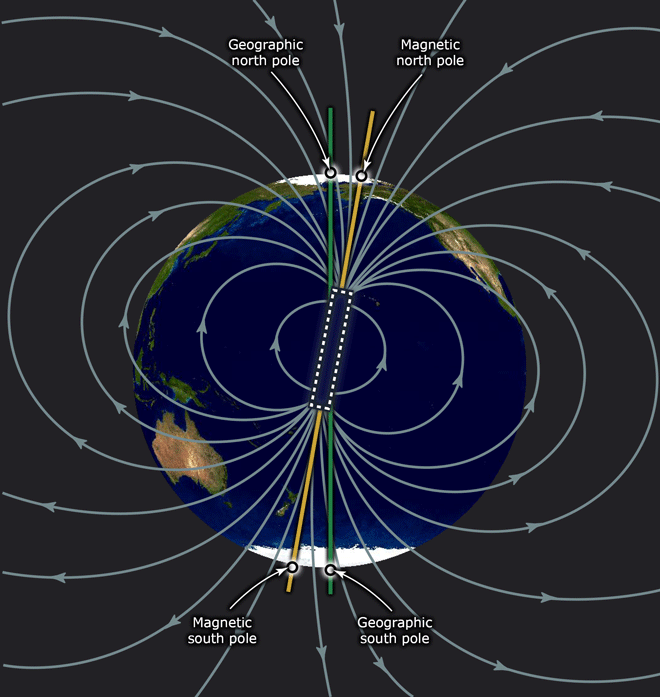
As the earth rotates, its molten core generates electrical currents through a process called the dynamo effect. The electrical charges produce magnetic fields with a north and south magnetic pole, which are close to but not at the geographic poles. The magnetic poles move several kilometres a year. Many migratory birds seem to be able to detect the magnetic field, giving them a sense of northward or southward direction. They may also detect the angle of dip (the angle between the force field and the earth’s surface) and regional variation in the field’s strength, which would help them to form a magnetic map.
Te whakamahi i tēnei tūemi
Te Ara – The Encyclopedia of New Zealand
This item has been provided for private study purposes (such as school projects, family and local history research) and any published reproduction (print or electronic) may infringe copyright law. It is the responsibility of the user of any material to obtain clearance from the copyright holder.
Base map: NASA Visible Earth






Tāpiritia te tākupu hou